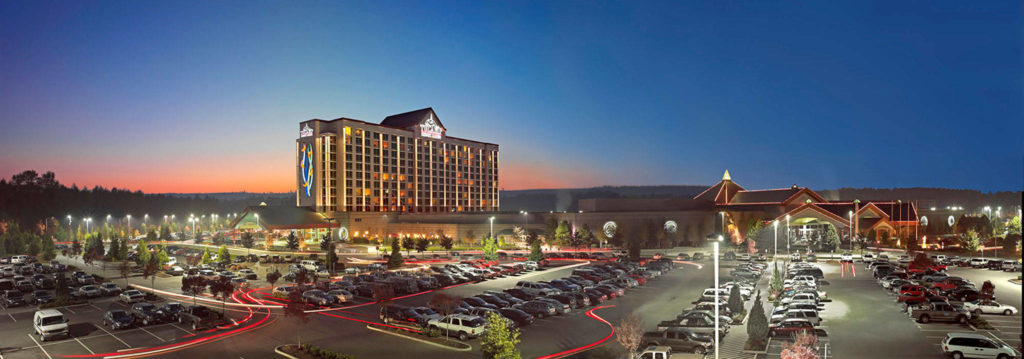EVERETT — Want to know if a festival or farmers market is attracting hip, young urban types?
Here’s one metric: Count the number of man buns per 100 people, said David Beurle, CEO of Future IQ, at Snohomish County’s first Tourism Summit last month.
Regionally, tourism is on the upswing. Last year, the county generated $2 billion from tourism and outdoor recreation — the highest amount ever, county officials said.
To draw even more visitors (with or without man buns), Snohomish County has launched a new $1.4 million initiative, “Tourism 2.0,” funded by the county’s lodging tax on overnight stays. (Proceeds from the lodging tax can only be used for tourism.)
“Tourism 2.0 is about stewardship, creating lasting economic, social and environmental benefits across the region,” County Executive Dave Somers told summit participants.
A portion of the money was used to hire Future IQ and two other firms. Together with the county government, they’re creating a “sustainable tourism” model — one that protects natural resources, benefits visitors and preserves residents’ quality of life. Minneapolis-based Future IQ is responsible for developing a program to attract visitors and ensure that tourist destinations aren’t overrun. It recently worked with Travel Oregon to produce a program in support of the destination community of the Columbia River Gorge, “an area like Snohomish County with popular outdoor assets that sometimes struggles with visitor congestion points.”
Milltown Creative, an Everett marketing firm, is developing the program’s brand and message, targeting travelers who support and appreciate sustainability.
Gibson Media, a Seattle-based marketing firm, will identify the best ways to reach those travelers through print, social media and other avenues.
Sustainable tourism has always been on the table, but its role has been elevated. “It is the foundation of the 2018-2022 strategic plan,” said Amy Spain, executive director of the Snohomish County Tourism Bureau, a nonprofit marketing agency engaged by the county.
On the plus side, “More tourists result in more jobs and an improved standard of living in our communities,” said Snohomish County Council Councilman Terry Ryan, who chairs the Lodging Tax Advisory Committee.
But in the absence of a plan for sustainable tourism, “there is the risk of … overuse and unintended consequences,” Beurle told the summit. Participants were a mix of elected officials, federally recognized tribes and tourism professionals.
As part of the initiative, the county is trying to reshape tourism promotion, county spokesman Kent Patton said.
One big change: In January, the Snohomish County Tourism Bureau moved into the same building that houses the Snohomish County Parks, Recreation & Tourism department at Willis Tucker Park in Snohomish.
Tom Teigen, the director of county parks, recreation and tourism, said the change is intended to foster collaboration “as we build a model for sustainable tourism in the new Tourism 2.0 roll out.”
It’s hoped the new configuration will allow the various agencies “to speak with one voice,” Patton said.
“We certainly have benefited from the proximity to one another,” said Spain, who called the tourism bureau the “support team for the initiative.”
At the close of the two-day summit, participants broke into small groups to discuss what tourism should be like over the next 15 years and how best to keep locals in the loop. Tourism can raise residents’ hackles when it disrupts their lives.
“You have to have residents involved from the beginning,” Patton said.
To be sure, travelers benefit local businesses, said one participant, but when roads and infrastructure that serve the community and visitors aren’t maintained, residents might take a dim view of tourism.
One way for residents to voice concerns is through local neighborhood associations, said Everett City Councilwoman Ethel McNeal, who participated in a discussion.
The summit findings will be used to inform the Tourism 2.0 initiative, Spain said. “It’s a work in progress.”
Tourism is the one of the county’s largest industries. Direct-tourism related jobs employ nearly 11,000 and generate about $23 million in local taxes and $58 million in state taxes, according to a summit news release.
One recent bright spot has been the creation of a statewide tourism promotion program.
A previous incarnation was killed during the Great Recession by budget cuts. Until March, Washington was the only U.S. state without a statewide tourism marketing program.
In last year’s draft Strategic Tourism Plan for Snohomish County, the authors bemoaned the 2011 closing of the state Tourism Office. They speculated that its closure might make it difficult for Snohomish and other Washington counties to compete with states with a statewide tourism office.
“I am optimistic – in fact ecstatic – that Washington State will soon have a marketing organization,” Spain said.
Jon Snyder, who also attended the summit and is the outdoor recreation and economic development policy adviser to Gov. Jay Inslee, noted that outdoor recreation alone supports nearly 200,000 jobs in the state.
Janice Podsada: jpodsada@heraldnet.com; 425-339-3097
Snohomish County’s hot tourism spots
These are the county’s top attractions and activities (in no particular order), according to the Snohomish County Tourism Bureau:
- The Boeing Tour at the Future of Flight Aviation Center Paine Field, Mukilteo.
- Flying Heritage and Combat Armor Museum; Historic Flight Foundation; and Museum of Flight Restoration Center and Reserve Collection, Paine Field.
- The Mountain Loop Highway, Mount Baker-Snoqualmie National Forest.
- Tulalip Resort Casino, Tulalip.
- Puget Sound Express whale watching tours, Edmonds.
- Seattle Premium Outlets, Tulalip.
- Hibulb Cultural Center, Tulalip.
- Jetty Island, Everett.
Experiences:
- Hiking.
- River rafting.
- Skydiving and hot-air ballooning at Harvey Field, Snohomish.
Talk to us
> Give us your news tips.
> Send us a letter to the editor.
> More Herald contact information.






























